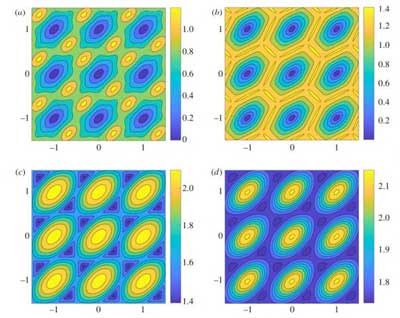| Dec 23, 2019 | |
Researchers to develop a theory of transients in graphene(Nanowerk News) The article "Equilibration of energies in a two-dimensional harmonic graphene lattice", published in the oldest scientific journal in the world Philosophical Transactions of the Royal Society considers the behavior of graphene in the moment of its transition from the state of thermal equilibrium and the process of returning to this state. |
|
| The scientific report is conducted by Vitaly Kuzkin, the deputy director of Higher School of Theoretical mechanics and Research Educational Centre "Gazpromneft-Polytech" of Peter the Great St.Petersburg Polytechnic University (SPbPU) in collaboration with Igor Berinskii from the School of Mechanical Engineering, Tel Aviv University (Israel) in the field of materials science, solid mechanics and dynamics of mechanical systems. | |
 |
|
| Scientists to develop a theory of transients in graphene. (Image: Peter the Great St.Petersburg Polytechnic University) | |
| "Our research group develops a theory that describes the transition to thermal equilibrium in crystals which are initially in a nonequilibrium state. It can be caused, for example, by high-speed laser exposure or the passage of shock waves. In this paper, we applied this theory to graphene", notes Vitaly Kuzkin. Usually, transients occur rather quickly and have a high frequency, but graphene turned out to be unique here - some transients in graphene have very low frequencies. " | |
| The research results are important for investigation of heat transport and other nonequilibrium thermodynamic processes in graphene. | |
| "Graphene is a very promising material. It has many useful properties like strength, stiffness, high heat and electrical conductivity. It can be used in flexible electronics, wearable devices, and in creation of composite materials," - explains Vitaly Kuzkin. |
| Source: Peter the Great Saint-Petersburg Polytechnic University | |
|
Subscribe to a free copy of one of our daily Nanowerk Newsletter Email Digests with a compilation of all of the day's news. |
